You’ll find that installing motion sensors isn’t as complicated as it seems, but there’s a significant difference between a functional installation and one that actually works well for your needs. Most beginners make critical mistakes in the first few steps that lead to false alarms, dead zones, or complete failure down the line. These five essential tips will help you avoid the common pitfalls that turn a simple weekend project into a frustrating experience.
Turn Off Power and Gather Your Tools
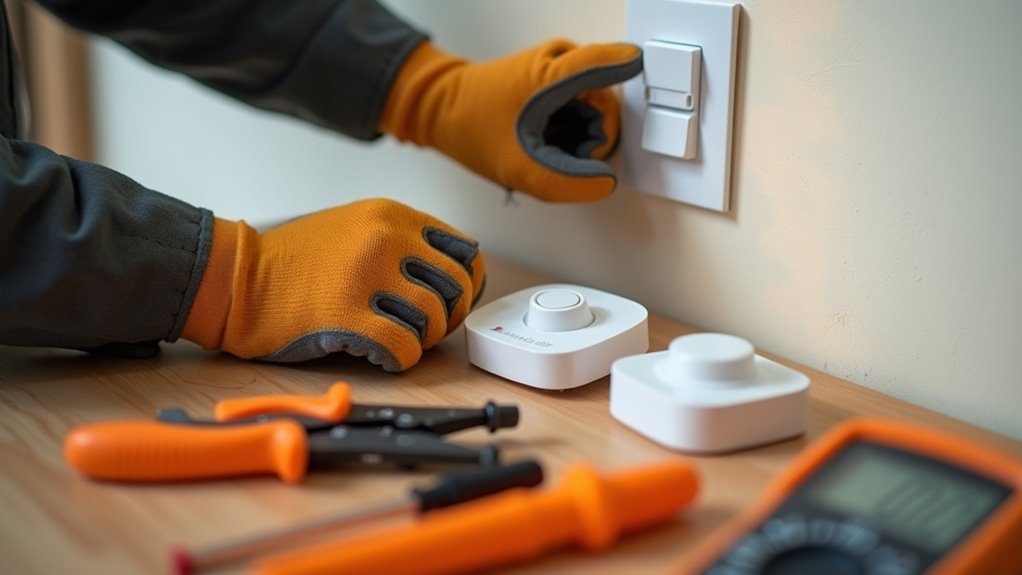
Before you begin installing your motion sensor, turn off the power at the breaker box to eliminate any risk of electrical shock. This critical safety step protects you from potentially dangerous electrical hazards throughout the installation process.
Next, gather all essential tools you’ll need. Collect a Phillips head screwdriver, pliers, and consider having a voltage tester available to verify the power is completely off. Confirm your motion sensor kit includes the sensor unit, mounting hardware, and detailed installation instructions.
Create a clean workspace by removing clutter around your installation area. This preparation facilitates a smoother, more efficient process.
Double-check that you have all necessary components and tools before starting. Taking time to turn off power properly and organize your materials prevents frustrating interruptions during installation.
Choose the Right Location for Your Motion Sensor
Three key factors determine your motion sensor’s effectiveness: location, coverage area, and environmental conditions. Strategic placement guarantees ideal coverage while minimizing false alarms.
Position sensors at choke points like stairwells and main hallways where intruders must pass. Install them 10–15 feet from heat sources such as radiators or sunny windows to prevent false readings.
| Location Type | Best Placement | Coverage Benefit |
|---|---|---|
| Entry Points | Near doors/windows | First detection line |
| Hallways | Wall-mounted alongside walkways | Maximum foot traffic monitoring |
| High-Value Rooms | Adjacent to bedrooms/studies | Additional security layer |
| Choke Points | Stairwells/narrow passages | Unavoidable detection zones |
Focus on areas where intruders will likely walk, guaranteeing sensors cover natural pathways while avoiding environmental interference that could trigger false alarms.
Remove Existing Controls and Make Proper Wiring Connections
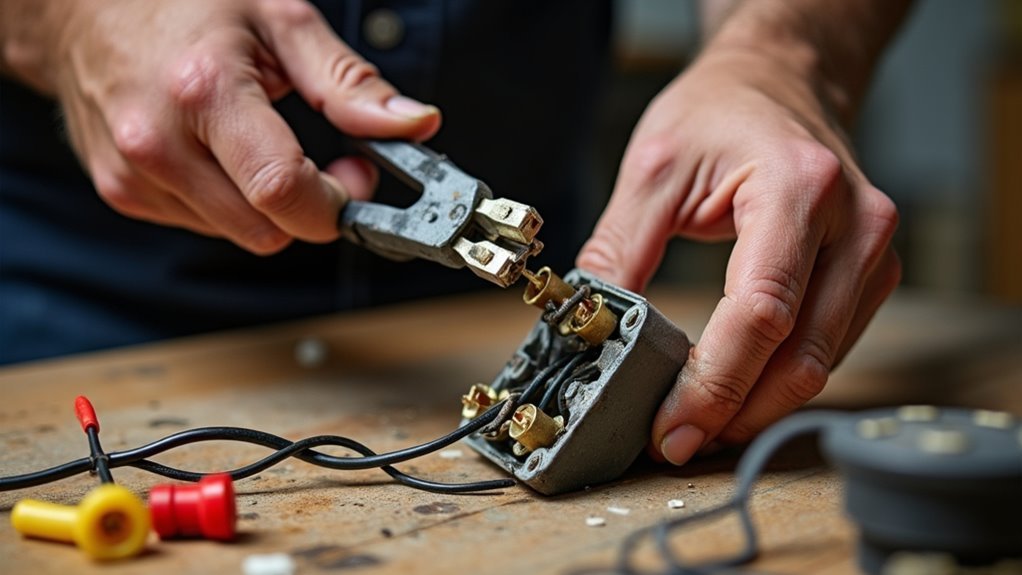
Turn off the power at the breaker before touching any wires—this critical first step prevents electrical shock and creates a safe working environment.
Removing your old switch and installing a new motion sensor doesn’t have to cost you the list price of professional installation.
Follow these essential wiring steps:
- Use a Phillips head screwdriver to remove screws securing the existing control to the wall box.
- Gently pull the control away from the wall to access the internal wiring connections.
- Identify and connect the ground wire (green or bare) to the corresponding wire from your new motion sensor.
- Connect the two black wires from the motion sensor to the matching wires in the wall box.
- Double-check for exposed wires before mounting the new control securely.
Mount and Secure Your Motion Sensor
After completing your wiring connections, you’ll need to strategically position and mount your motion sensor for peak performance.
Choose a location 10–15 feet away from heat sources like radiators or sunny windows to prevent false alarms. Install your sensor in corners or at choke points such as stairwells and main hallways to maximize coverage area.
Mount and secure your motion sensor high on the wall, ideally opposite main entrances for best field of view. Use the screws provided in your installation kit to fasten the device firmly, ensuring it’s level and properly positioned.
This setup makes it easy to set and enhances detection capabilities. Remember to regularly check placement and clean your sensor every couple of months to prevent dust from obstructing performance.
Test Functionality and Adjust Detection Settings
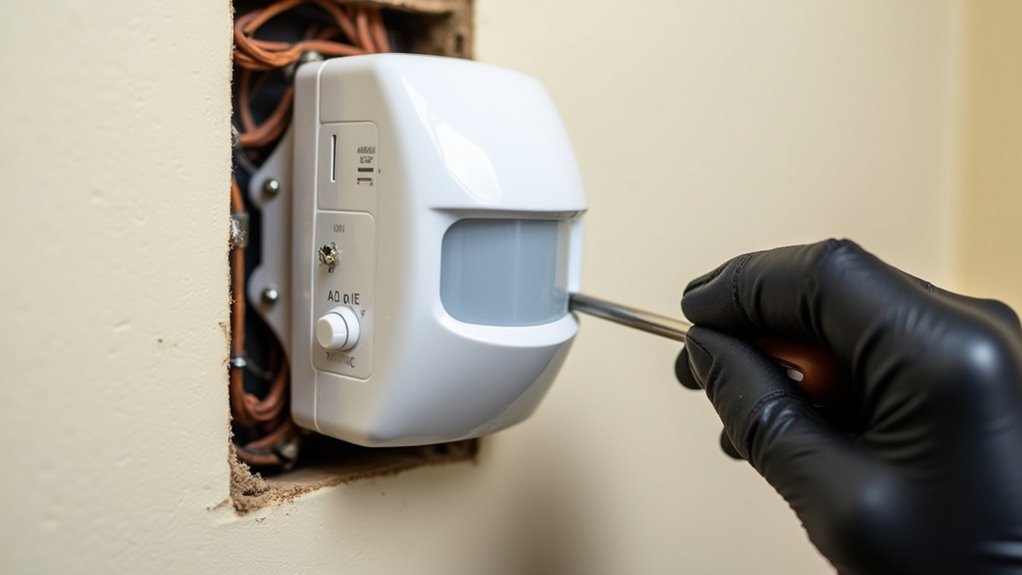
Once your motion sensor is securely mounted, you’ll need to verify it’s working properly and fine-tune its settings for your specific environment.
Start by powering on the device and test functionality by walking through its detection range. Most sensors respond immediately to movement when properly installed.
- Adjust sensitivity settings to prevent false alarms from pets or minor movements – check your manual for specific instructions
- Configure outdoor sensors to trigger only with significant motion, avoiding environmental interference from wind or vehicles
- Use built-in test modes to verify performance without activating your entire security system
- Test after environmental changes like furniture relocation to maintain ideal detection
- Perform regular functionality checks to guarantee consistent performance over time
Proper calibration guarantees reliable operation and reduces unnecessary alerts.
Frequently Asked Questions
Where Should You Not Place a Motion Sensor?
You shouldn’t place motion sensors near heat sources, in direct sunlight, too low on walls, behind furniture, or in high-traffic areas where they’ll trigger false alarms frequently.
How Do You Trick a Motion Sensor to Stay On?
You can place a small heat source like a space heater near the sensor to mimic human presence, or wave a fan continuously to create motion that keeps triggering the device.
Can I Install a Motion Sensor to an Existing Light?
You can install a motion sensor to your existing light by replacing the standard switch with a motion sensor switch. Turn off power first, connect the wires properly, and test functionality afterward.
Do You Need an Electrician to Install a Motion Sensor Light?
You don’t always need an electrician for motion sensor light installation. If you’re comfortable with basic wiring and follow safety protocols, you can install them yourself using the included guides.

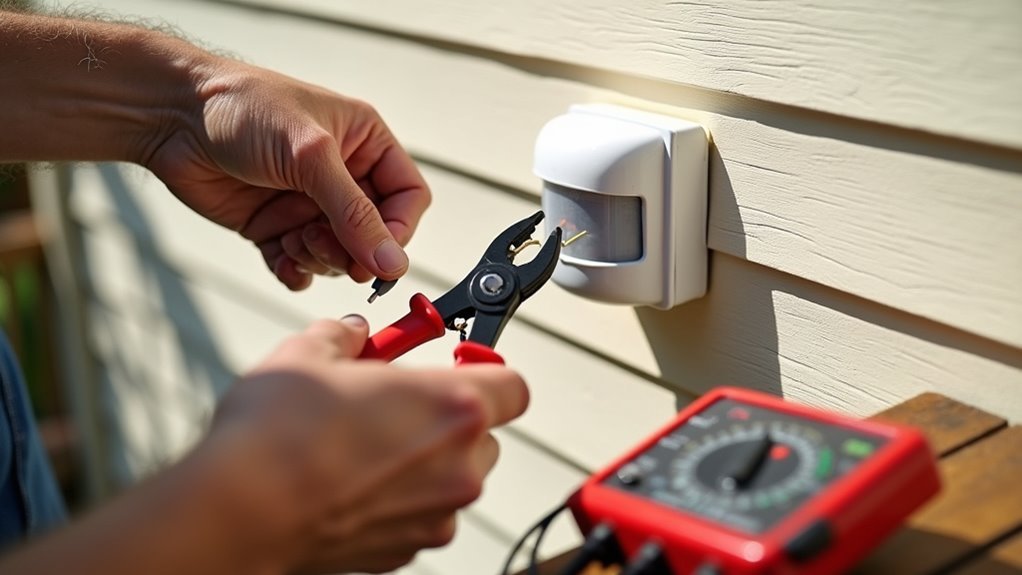

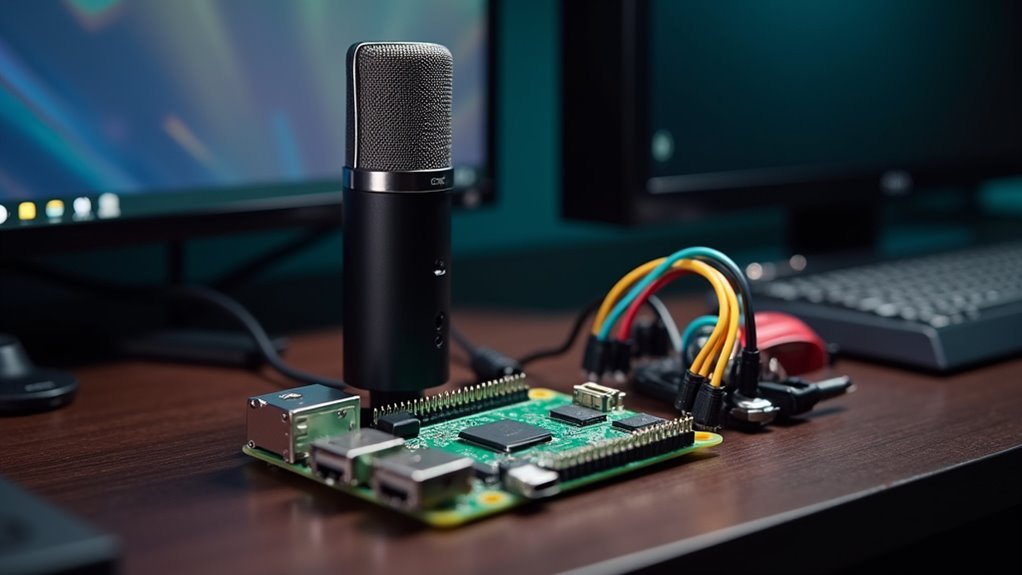

Leave a Reply